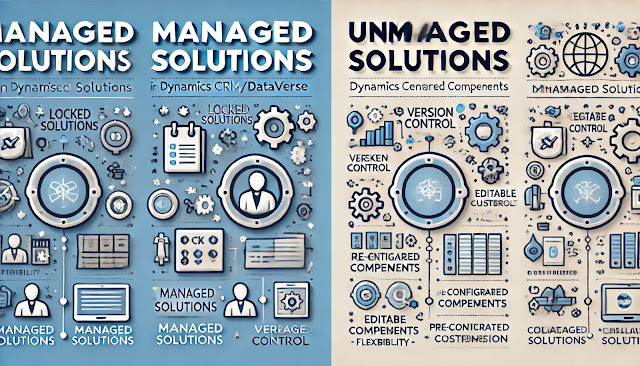Dynamics 365 Field Service : Finalize returns
In any field service organization, managing parts and products effectively is crucial for operational excellence. One of the key scenarios in inventory management is handling product returns—whether defective parts from customers, unused parts from field technicians, or warranty replacements back to vendors.
The “Finalize Returns” process in Dynamics 365 Field Service is designed to streamline this workflow, ensuring inventory accuracy, process compliance, and traceability across the service supply chain.
This article breaks down the functional flow and the logical workings behind Finalize Returns in Dynamics 365 Field Service.
What Is "Finalize Returns" in Field Service?
The Finalize Returns process comes into play after a return order is created and approved. It represents the stage where:
- The returned product is physically received back into the inventory system.
- Inventory adjustments are made (quantity, location).
- Any linked financial or vendor return processes are triggered.
- The return order is closed and marked as completed.
In short, it finalizes the lifecycle of a product return and ensures data integrity in inventory and financial systems.
Functional Workflow: Step by Step
Here’s how the process typically works for a Field Service organization using Dynamics 365:
Return Order Creation
A field technician or back-office user creates a Return Merchandise Authorization (RMA) or Return Order in Field Service.
This can be for:
- Defective items from customers.
- Unused parts returned from field visits.
- Warranty replacements going back to vendors.
Approval and Processing
- The return request is reviewed and approved by inventory or operations managers.
- Approved returns are assigned a Return Warehouse and a Return Location in the system.
Logistics Handling
- The physical items are shipped back to the designated warehouse.
- Tracking details (carrier, tracking number) may be logged in the system.
Finalize Returns
This is where Dynamics 365 Field Service: Finalize Returns kicks in:
- Navigate to the Return Order record.
- Use the Finalize Returns action (often a ribbon button or process step).
- Confirm the quantity received, warehouse, and bin location.
- Adjust inventory levels accordingly.
- Optionally, trigger:
- Vendor return requests (if defective).
- Credit adjustments for customer returns.
- Warranty replacement workflows.
Closure
- The system updates the status of the return order to Completed or Closed.
- Inventory records reflect the returned stock.
Logical Flow and Behind-the-Scenes Process
Let’s look at what happens logically when you finalize returns:
1. Inventory Movement
The system increments stock levels in the return warehouse/location.
It uses Dataverse inventory entities like:
- `msdyn_inventoryadjustment`
- `msdyn_inventoryjournal`
- `msdyn_warehouse`
Business rules ensure the right warehouse and bin are updated.
2. Transaction Posting
If integrated with ERP (like Dynamics 365 Finance or Business Central):
A return transaction posts to the financial system.
Accounts are adjusted to reflect incoming stock.
3. Work Order Linkage
- The system traces back the returned product to its originating work order and technician.
- This enables tracking of field resource utilization and accountability.
4. Exception Handling
The system checks:
- Are quantities within limits of the original return request?
- Are returned items marked as defective or restockable?
- Is the warehouse location active?
If validation fails, errors are surfaced to the user for correction.
5. Audit Trail
- Dynamics logs the transaction in the audit history for compliance.
- This includes timestamps, user actions, and inventory adjustment details.
Why Is This Important?
Here’s why the Finalize Returns process is a game-changer:
- Operational Accuracy: Keeps inventory records in sync with physical stock.
- Visibility: Provides end-to-end traceability of parts, from dispatch to return.
- Financial Control: Aligns inventory adjustments with financial accounting systems.
- Compliance: Ensures adherence to return policies and warranty obligations.
Pro Tips for Implementation
- Automate Approval Workflows: Use Power Automate to auto-approve certain return types.
- Integrate with ERP: If using D365 Finance/Supply Chain, leverage dual-write or Power Automate for seamless data flow.
- Enable Mobile Support: Let technicians initiate and track returns from the Field Service mobile app.
- Configure Alerts: Set up alerts for large-volume returns or defective stock for quick management intervention.
Final Thoughts
The Finalize Returns feature in Dynamics 365 Field Service is not just a functional step—it’s a vital part of a connected field service ecosystem. It closes the loop on returns management, helping businesses maintain inventory integrity, enhance customer satisfaction, and streamline reverse logistics.
By properly configuring and adopting this feature, organizations can move towards a proactive, data-driven approach in Field Service management.

.png)










Comments
Post a Comment